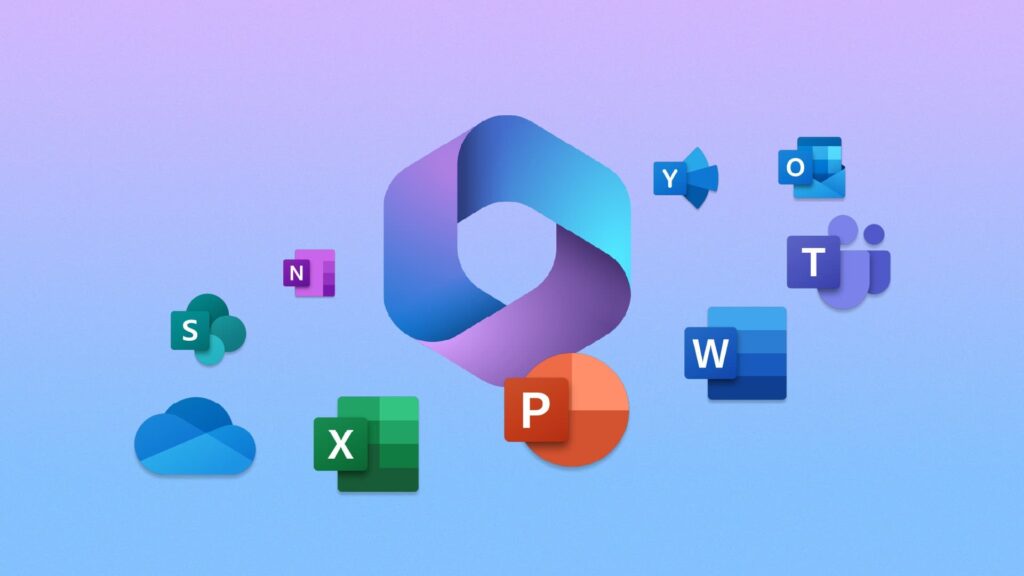
In the ever-evolving landscape of enterprise solutions, Microsoft SharePoint stands as a powerhouse, reshaping how large-scale organizations approach digital collaboration and information management. For major enterprises navigating intricate hierarchies and dispersed teams, SharePoint is not merely a platform but a strategic ally in their pursuit of digital cohesion. According to Microsoft, more than 250,000 organizations use SharePoint, including over 85% of Fortune 500 companies who use SharePoint Online as part of Office 365. As we delve deep into the multifaceted landscape of SharePoint, dissecting why it has become synonymous with digital transformation for big enterprises, we will offer tailored insights to illuminate the path forward for enterprises at the crossroads of technological decisions, ensuring a robust grasp of the platform’s functionalities and its potential impact on organizational dynamics.
SharePoint has an average annual growth rate of approximately 20%, with around 20,000 new users daily.
From fostering collaboration at scale, efficient information governance, and seamless integration within the Microsoft ecosystem to robust security measures, customization options, and scalability, SharePoint aligns with the evolving needs of companies of all sizes. With over 200 million active monthly users since 2020, SharePoint has become the preferred option for businesses of all sizes with around 75% of all intranets being SharePoint based in the past 6 years. This exploration unveils the pivotal elements resonating within the expansive structures of major enterprises, providing valuable insights and strategic guidance for leaders navigating the intricate landscape of digital transformation across their organizational domains.
Advantages of SharePoint
Collaboration and Communication
SharePoint’s role as a collaboration hub extends beyond a mere repository for documents. It serves as a dynamic space where teams converge, fostering a culture of seamless collaboration and communication. The platform’s document-sharing capabilities, coupled with real-time co-authoring features, create an environment where ideas flow effortlessly, breaking down geographical barriers.
Cost Efficiency
The financial landscape of enterprise solutions often necessitates strategic decision-making. SharePoint, thoughtfully bundled within many Microsoft Office 365 packages, emerges as a cost-effective solution. For enterprises already immersed in the Microsoft ecosystem, SharePoint offers a robust set of features without the burden of additional expenses. This inclusion translates into a significant cost advantage, allowing organizations to allocate resources strategically.

Microsoft Office Suite
SharePoint Synergy with Microsoft Suite
SharePoint’s seamless integration with the broader Microsoft Suite is not just a convenience but a strategic advantage. The synergy ensures a harmonious flow of information between applications like Word, Excel, and Teams. This interconnectedness streamlines workflows, reducing friction in daily operations. Users can seamlessly transition between tasks, creating an integrated digital experience that fosters efficiency and productivity.

Microsoft Authenticator
SharePoint Security
Security breaches pose a significant threat in today’s digital landscape. SharePoint addresses this concern head-on by integrating with Microsoft Authenticator. This additional layer of authentication enhances the platform’s security posture, ensuring that only authorized personnel gain access to sensitive data. Moreover, the flexibility of multiple permission levels empowers organizations to tailor access rights, reinforcing a robust and tailored security framework.
Dynamic Sites For Various Devices
In an era where flexibility is paramount, SharePoint’s dynamic sites are a testament to adaptability. These sites offer a responsive and consistent user experience across various devices, from desktops to smartphones. This adaptability empowers employees to access critical information and collaborate on projects seamlessly, fostering flexibility and productivity. Whether at their desks or on the move, users can engage with SharePoint content effortlessly.
Enhanced Search Capabilities
SharePoint’s robust search functionality empowers users to quickly locate and access relevant documents and information. The platform’s intelligent search algorithms and metadata-driven organization contribute to a more efficient and streamlined search experience, saving valuable time for employees across various departments.
Automation of SharePoint with Power Automate Integration
The integration of Power Automate within SharePoint adds a layer of automation to routine tasks and processes. Organizations can design custom workflows, automate approvals, and optimize document routing, enhancing overall operational efficiency and reducing manual workload.
Disadvantages of SharePoint

It Can Feel Like Rocket Science
Learning Curve
While SharePoint’s feature richness is a boon, it comes with a trade-off. The platform’s complexity may pose challenges, particularly for new users. Navigating through its myriad features might require a learning curve, impacting initial user experiences. To mitigate this, organizations must invest in comprehensive training programs. Ensuring a smooth onboarding process is crucial to unlocking the platform’s full potential and minimizing any initial friction.
Limited or Complex Customization
SharePoint’s customization capabilities, while extensive, walk a fine line between flexibility and complexity. Out-of-the-box features cater to many needs, providing a robust foundation. However, enterprises seeking extensive customization may encounter challenges. Achieving a delicate balance between customization and user-friendly design requires careful consideration and specialized expertise. This complexity can be a double-edged sword, offering immense flexibility but demanding meticulous planning.
Lack of External Synergies
For enterprises not fully immersed in the Microsoft Suite, SharePoint’s seamless synergy may encounter limitations. This is particularly relevant for companies relying on non-Microsoft applications. Integration challenges might arise, impacting the seamless flow of information across platforms. While SharePoint excels within the Microsoft ecosystem, organizations with diverse software landscapes may need to navigate potential hurdles, ensuring a smooth integration with existing systems.
Potential Data Migration Challenges
Undertaking a transition to SharePoint or migrating large volumes of existing data into the platform can pose challenges. Organizations may encounter issues with data mapping, preserving metadata, or ensuring a seamless transfer, especially when migrating from legacy systems. Adequate planning and expertise are essential to mitigate potential disruptions during the migration process.
Potential Overwhelm with Feature Richness
SharePoint’s feature-rich environment can potentially overwhelm users, especially those who may not require or utilize its extensive functionalities. The abundance of tools and options might lead to a cluttered interface, making it challenging for some users to navigate and locate the specific features relevant to their tasks. A thoughtful onboarding process and ongoing user support are crucial to help users efficiently navigate and utilize SharePoint’s diverse set of features.
Our Success with SharePoint
For a particular client, Seagen, a prominent biotech company, Black Flag Creative orchestrated a transformative solution leveraging our deep expertise in Microsoft SharePoint. Faced with the imperative of fostering seamless communication and knowledge sharing across diverse departments, we embarked on the creation of a purpose-built SharePoint Hub, the “Development Intranet.”
The Development Intranet emerged as a centralized hub, connecting multiple departments within Seagen. With a dedicated news and updates section at its core, the hub ensured real-time dissemination of company-wide announcements and project updates. Tailored departmental portals were intelligently integrated, providing specialized spaces for each team to collaborate, share resources, and communicate effectively. This SharePoint-powered solution not only dismantled barriers between departments but also enhanced cross-functional collaboration, making the Development Intranet an indispensable asset in Seagen’s pursuit of innovation and collective success.
Conclusion
In the dynamic realm of enterprise solutions, Microsoft SharePoint stands as a versatile tool with undeniable advantages. While its learning curve and customization complexities may pose initial challenges, the platform’s integration within the Microsoft ecosystem positions it as a strategic choice for many enterprises. To fully capitalize on the benefits, companies should carefully assess their needs, invest in training, and explore customization options judiciously. As SharePoint continues to evolve, its role in shaping the collaborative future of enterprises remains pivotal. For those navigating the complexities of modern business, Microsoft SharePoint emerges not merely as a platform but as a dynamic partner in the journey towards streamlined, efficient, and collaborative enterprise operations.


